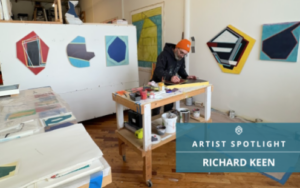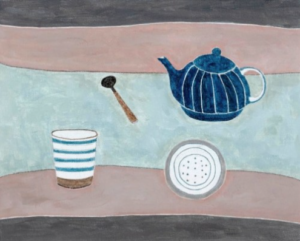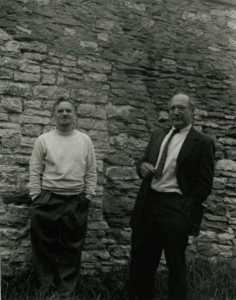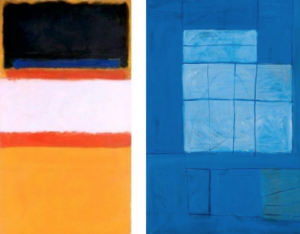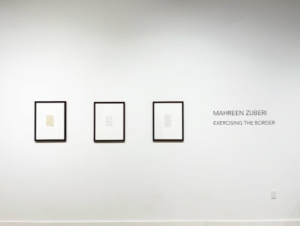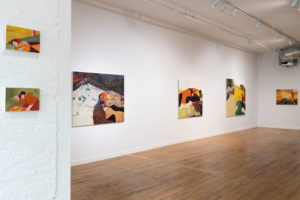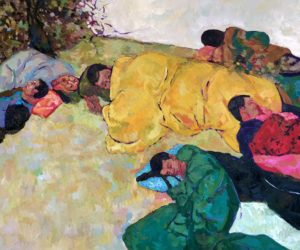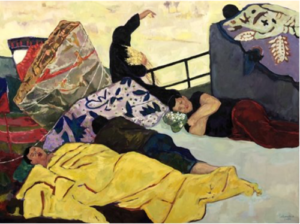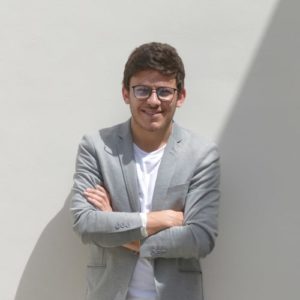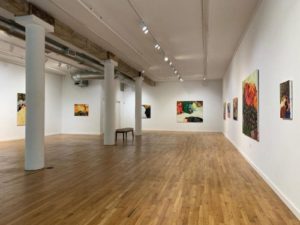Richard Keen working in his studio. Photo courtesy of the artist and Artwork Archive.
Why One Coastal State’s Landscape is Integral to This Artist’s Creative Process
Paige Simianer | April 11, 2024
“As far back as I can remember I have made sense of the world through art,” Richard says in his artist statement.
Artwork Archive’s Featured Artist Richard Keen is known for his use of color, line, and geometry influenced by the Maine coast, where he lives and works.
His commitment to interpreting his surroundings has led the artist to develop a distinctive style that resonates with both the physical beauty and the underlying geometric patterns of the Maine coastline. Through his eyes, viewers are invited to experience the familiar landscapes of Maine in a new light, where natural and man-made structures alike are reimagined.
The methods Richard uses to paint vary. Through scraping, wiping, brushing, spraying, and the use of palette knives and scrapers, he explores the tactile possibilities of paint.
Richard’s work is characterized by a delicate balance between the precision of crisp lines and shapes—often achieved through careful taping—and the expressive qualities of brushwork and other mark-making techniques.
At the heart of the artist’s abstractions is the concept of place, a tangible link to the environments that inspire him. Yet, his art leaves ample room for viewers to embark on their own journeys of interpretation and meaning.
Through his work, Richard Keen not only captures the essence of his surroundings but also offers a window into the profound ways in which art can shape our understanding of the world.
Artwork Archive had the chance to chat with Richard Keen about the significance of the coast of Maine in his artwork, his advice for artists, and how Artwork Archive helps him manage his studio and art career!
Do you have a favorite or most satisfying part of your process?
There is so much about the act of creating that is satisfying—I really, really love each part, so it’s hard to say which is my favorite.
The beginning, or the unknown; the middle, where my vision starts to become clear yet the finish line seems foggy and unsettled, with potential risk and failure; and…. the final piece which eventually reveals itself and calls you back over and over to stare in amazement that you actually created it.
Can you talk more about the significance of the coast of Maine in your identity as an artist?
The coast of Maine literally engulfed me.
From the first time I stood on its jagged shoreline and smelled the density of the fog and rockweed, to the moment I learned how to scuba dive, I realized it held the language necessary for me to build a dialogue with viewers and show them how I see the world.
I’ve been so lucky to live, hike, and work in this great state. I am also entangled in the working waterfront world and generally look for connections between my attraction to abstraction and the parts of Maine that surround me—whether they may be manmade or in my escapes into nature for mental grounding.
